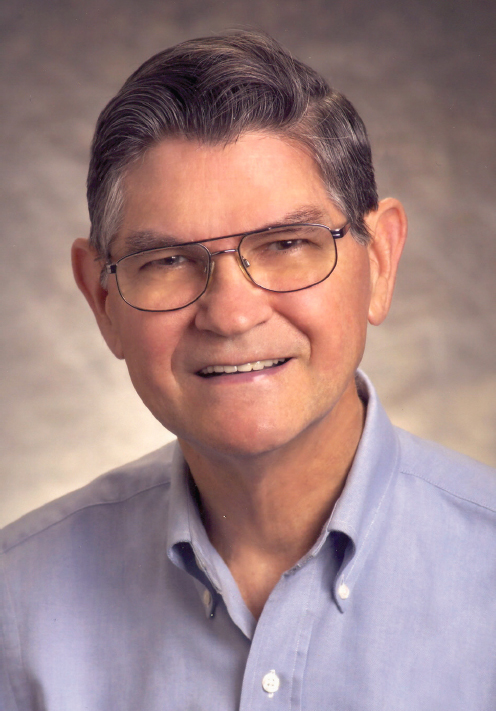NED H. BURNS
1932–2016
Elected in 2000
“For contributions to development and education in prestressed concrete including unbonded tendon building slabs and high-performance concrete bridges.”
BY JAMES O. JIRSA, JOHN E. BREEN, AND MICHAEL ENGELHARDT
NED HAMILTON BURNS, born November 25, 1932, in Magnolia, Arkansas, died peacefully in his sleep November 5, 2016, at age 83. An outstanding teacher, administrator, and structural engineering researcher, he served the University of Texas at Austin for nearly 40 years.
Ned was the youngest of six children born to Andrew Louis and Ila Mae (née Martin) Burns. He graduated as valedictorian from Texas High School in Texarkana, where he was active as a trumpet player in the band. He earned a bachelor of science degree in architectural engineering from the University of Texas in 1954. As important as his college education was to his future career, meeting his lifelong love, Martha Ann Fontaine, at the university led to a marriage that lasted 61 years.
Ned’s interest in prestressed concrete—on which he became widely recognized as an outstanding authority—began in 1955 when he was serving in the US Army at Fort Lewis, Washington. While there, he contacted Art Anderson (NAE 1977), president of Concrete Technology in Tacoma, to expand his professional horizons. Meeting on weekends, Ned
__________________
Adapted from the authors’ memorial resolution published by the University of Texas at Austin.
received numerous tutelage sessions on prestressed concrete design and construction from a pioneer in the industry.
After 2 years in the Army, Ned completed a master’s degree at the University of Texas in 1958, working with Phil Ferguson (NAE 1973), and a PhD in civil engineering at the University of Illinois at Urbana-Champaign in 1962, working with Chet Siess (NAE 1967). He then returned to UT as an assistant professor, became a professor in 1972, and was named Zarrow Centennial Professor in 1983. He also served as associate dean of academic affairs for engineering (1989–93) and director of the Ferguson Structural Engineering Laboratory (1994–97).
Ned’s career was marked by close identification with and numerous contributions to the study of prestressed concrete. For 40 years he taught the prestressed concrete course at UT, educating many leaders in the design, construction, and research community. And he was known internationally as coauthor of the classic Wiley text Design of Prestressed Concrete Structures (first published in 1963), with T.Y. Lin (NAE 1967; of UC Berkeley).
Under the sponsorship of the Reinforced Concrete Research Council and the Post-Tensioning Institute, Ned carried out the definitive tests of multipanel, unbonded flat slabs that became the basis for design provisions for the American Concrete Institute building code. The entire unbonded slab industry grew into a major construction market force on the basis of this code.
Ned was a pioneer in supervising the experimental studies that formed the basis for the analysis of posttensioned segmental box girder bridges—providing, again, the technical background for the standards that launched a significant new technology. He led one of the nation’s most successful high-performance concrete pretensioned bridge design-and-construction demonstration projects (the North Concho River Overpass on US Route 67 in San Angelo, Texas). And in 2003 he demonstrated the feasibility of precast, posttensioned pavement slabs in a significant full-scale field project on I-35 in Texas.
Ned’s work was recognized as sound, innovative, and important. His research on anchoring prestressing steel in
concrete received the Precast Concrete Institute’s Martin P. Korn Award (1993) and the T.Y. Lin Award (1994) from the American Society of Civil Engineers. And in 2000 he was elected to the NAE.
He also received numerous awards over the years for his exceptional teaching and advising at both the undergraduate and graduate levels. Among these were the General Dynamics Award for Excellence in Teaching (1965), Student Engineering Council Teaching Achievement Award (1977), Amoco Teaching Excellence Award (1983), Haliburton Education Foundation Award of Excellence (1983), American Concrete Institute Joe W. Kelly Award (1990), UT Blunk Memorial Professorship (1996), and Prestressed Concrete Institute Distinguished Professor Award (2000).
More than his numerous teaching, administrative, and research accomplishments, Ned was a person of great human interaction. He took deep personal interest in the welfare of not only the students in his classes but also those he came into contact with as a graduate advisor, associate dean for student affairs, and administrator of the Engineering Loan Committee. At the end of each semester, he would share his philosophy of engineering and life with students: “The truly great man is he who plants shade trees that he will never sit under.”
He was a dedicated member of Highland Park Baptist Church, where he served as a deacon, Sunday school teacher, and in various other positions and sang in the choir as a second tenor. He was a wonderful family man who cheerfully attended Girl Scout and Boy Scout campouts, cochaired the Johnston Band Parents Association along with Martha, served as PTA copresident, and attended countless piano recitals, dance performances, and band concerts. He enjoyed woodworking and furniture building, and he and Martha enjoyed travel throughout the United States and Canada with other trips to Peru, Brazil, Europe, China, Thailand, and Japan.
Ned is survived by Martha; their children Kathryn Burns of Chapel Hill, NC, Stephanie Burns Wechsler (Dan) of Atlanta, GA, and Michael Burns (Katherine) of Austin, TX; three granddaughters; and many other loving family members and friends.





